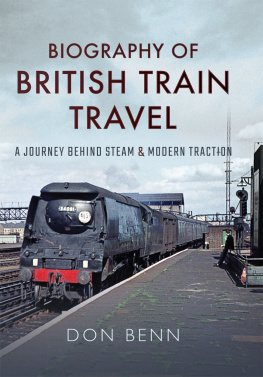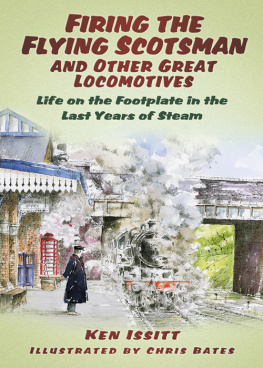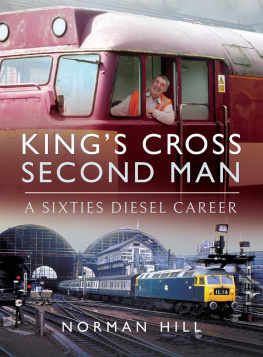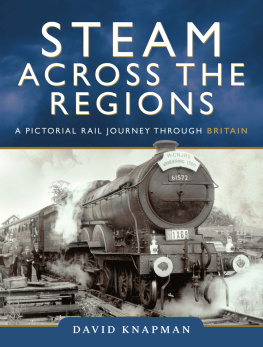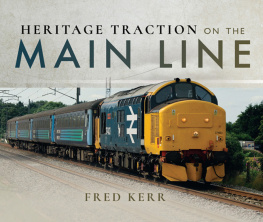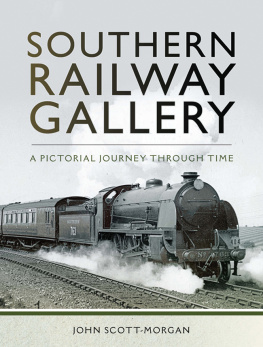
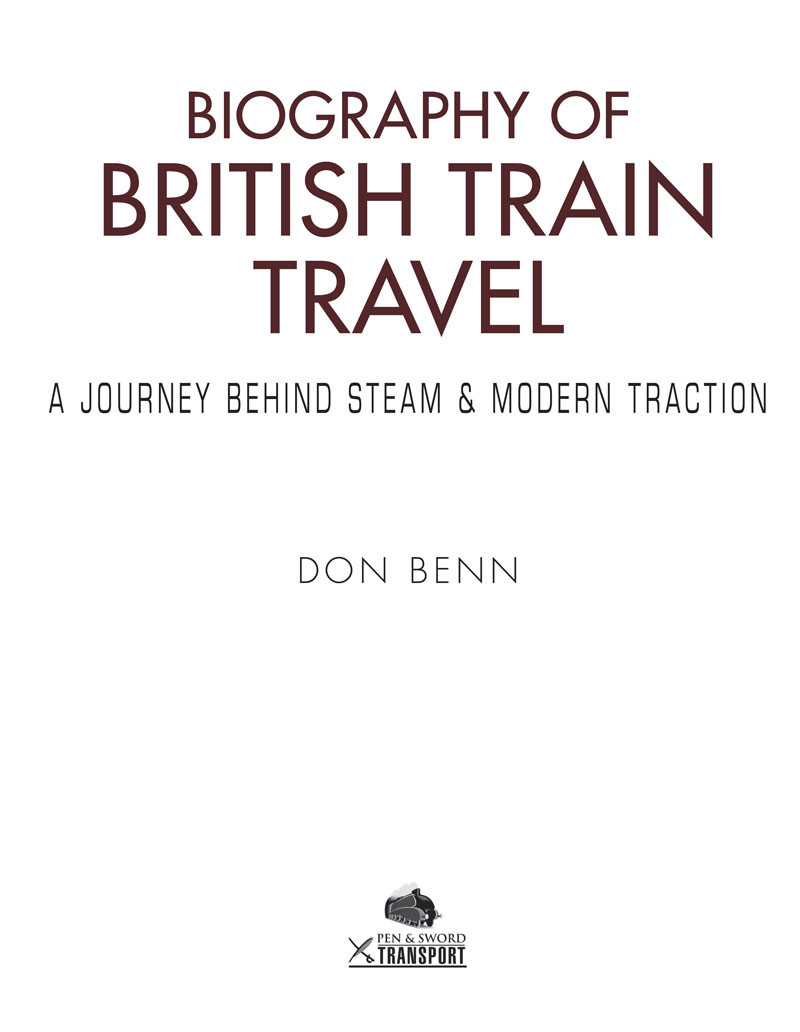
CONTENTS
PREFACE
The idea for this book came to me when I realised how many unfinished or unpublished articles were sitting on my PC. It surely wouldnt take me long to put them all together and add a few more illustrations and train running logs would it? Well that was back at Christmas 2014 when I was doing my annual project list for the coming year and I didnt actually finish everything until the end of September 2015. Some chapters didnt really fit into what was supposed to be a trawl through my long years of recording the railway scene and so they were rewritten or abandoned. The end result is I feel quite well balanced; I could have added more, but didnt do so in order to keep the book to a reasonable size and also to keep back material for a more in depth look in later books. This applies particularly to Southern steam and to my travels in Europe. The bias in this book is towards my two main railway passions of train running performance and all matters Southern. I hope that the reader will be able to find something of interest to delve into when a quiet moment presents itself.
INTRODUCTION
I often hear the phrase railways are in my blood and it would be nice to think that this applies to me too as railways have dominated my life, but it does not. However engineering IS in my blood. My father spent his life in the motor trade and could and did build a car engine from a block, plus he tuned rally cars for a team which won various events in the 1950s and 60s. His father built the first successful automatic steering gear mechanism for yachts whilst working for a company in Bromley, Kent. It goes back even further as the family bible tells me that the Benn tribe worked in the Woollen Mills in Halifax in the 1830s, moving south at the turn of the nineteenth century. Railways were there somewhere though, as one uncle built and ran live steam O gauge engines and another worked with steam on the railways in the 1950s. Running nights at the home of the O gauge uncle became a regular feature in my youth once we had moved to Bromley in 1950 and inevitably I dawdled on the footbridge at Bromley South on the way to and from those enjoyable evenings so long ago. And that really was where it all started in the days before Kent Coast Phase One electrification when Sammy Gingell was producing his incredible efforts with steam engines from the huge variety still around then. Arrival on the footbridge to join the gang invariably coincided with an Arthur standing on the old platform 2 with a down train to the Kent Coast. If you add to this the family outings to Dover to visit two ageing aunts on my mothers side of the family (which included some French blood, no doubt explaining my love of France) which also always saw us spending time in the docks and on the beach where we could watch the diminutive B4 class 0-4-0 tanks working their way slowly along the front between the Western and Eastern Docks, or the C and O1 Class 0-6-0s shunting the docks, then I suppose you could say that railways were also in my blood. During those visits we would often stay in a caravan at Hawthorn Farm, Martin Mill from where my brothers and I would sometimes catch the train down into Dover for unofficial visits to the shed and docks area. It was when returning to Dover Priory station after one of these outings that we encountered Bulleid Pacific No.34091 Weymouth in original condition waiting to work a train to London. The friendly engine driver invited us up onto the footplate and the memory of that hot cab with the hum of the dynamo and the fireman opening and closing the steam-operated fire hole doors will stay with me always. He asked where we were going and I am sure that if it had been Canterbury and not Martin Mill then we would have stayed on the footplate for the ride. Chapter Twenty-Two gives a flavour of what it is like to actually ride on the footplate of a steam engine on the main line.
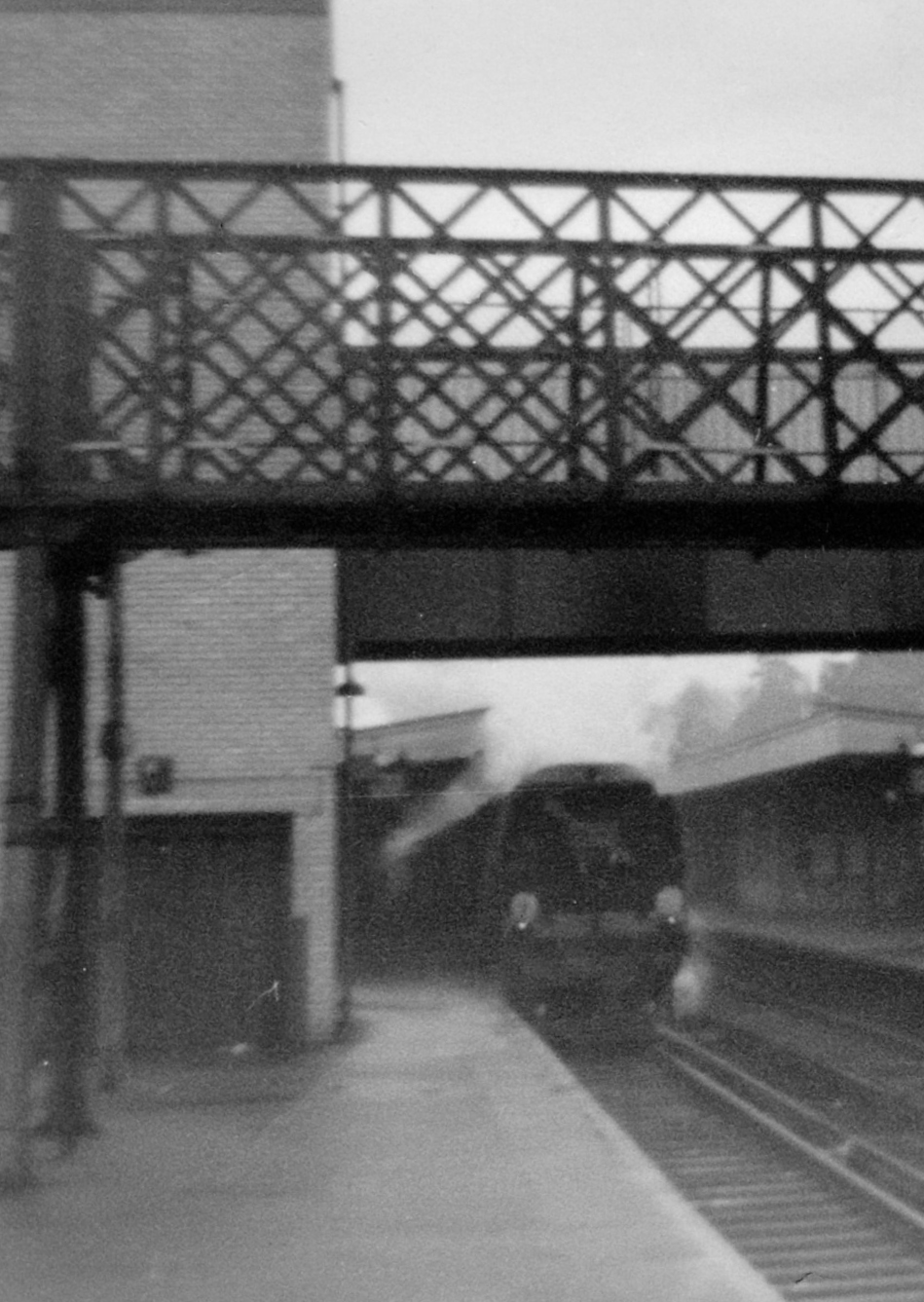
My earliest surviving photo. 34085 on the down Golden Arrow at Bromley South in about March 1960.
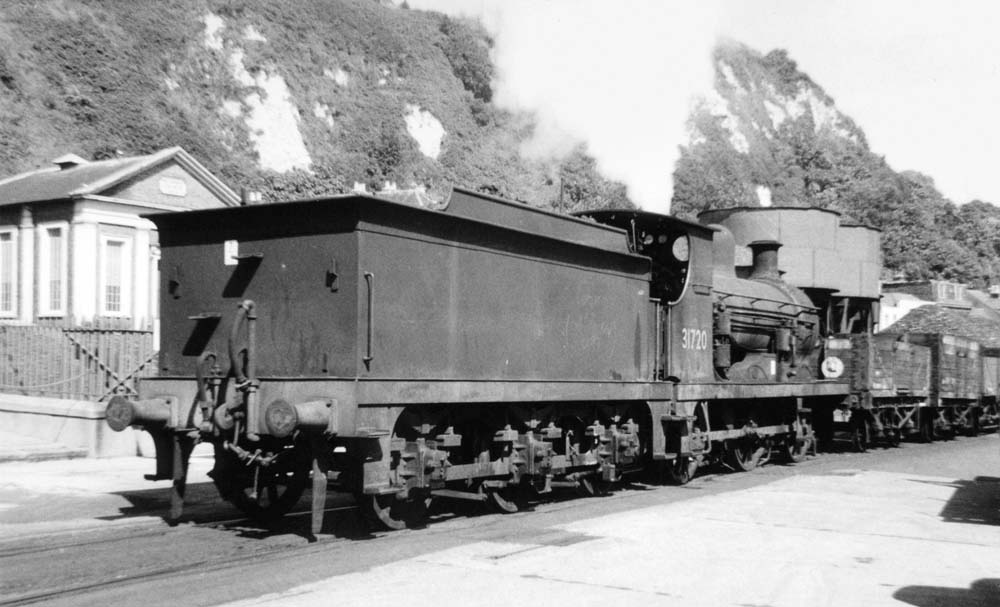
C Class 0-6-0 No 31720 shunting Dover Docks in July 1960.
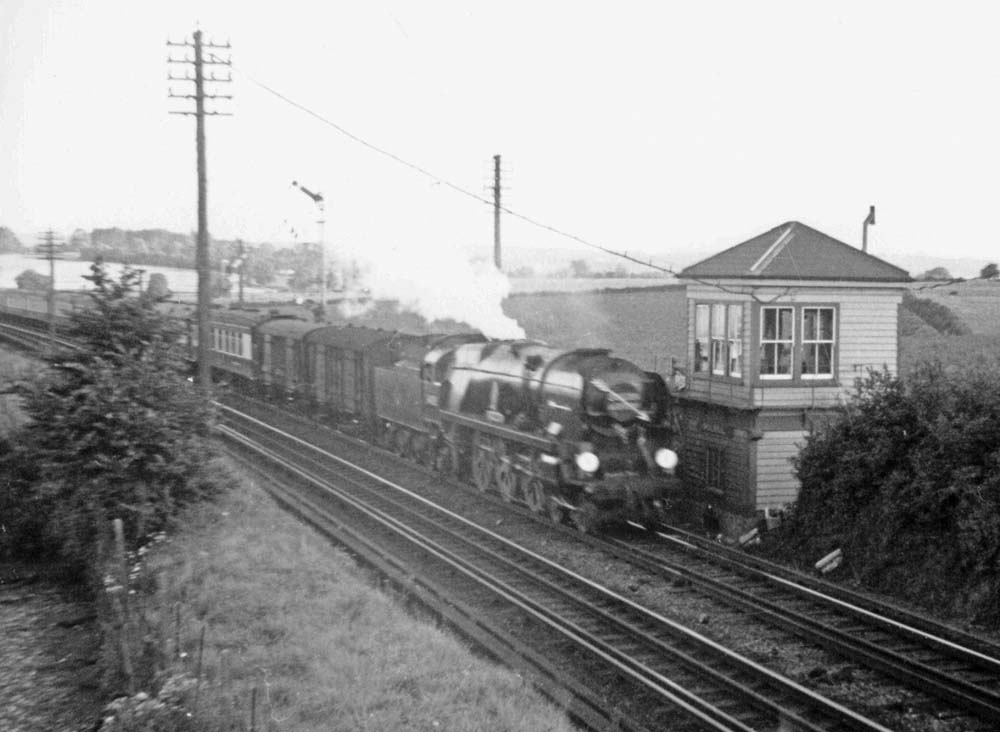
34100 Appledore on the up Golden Arrow passing Polhill Box in August 1960.
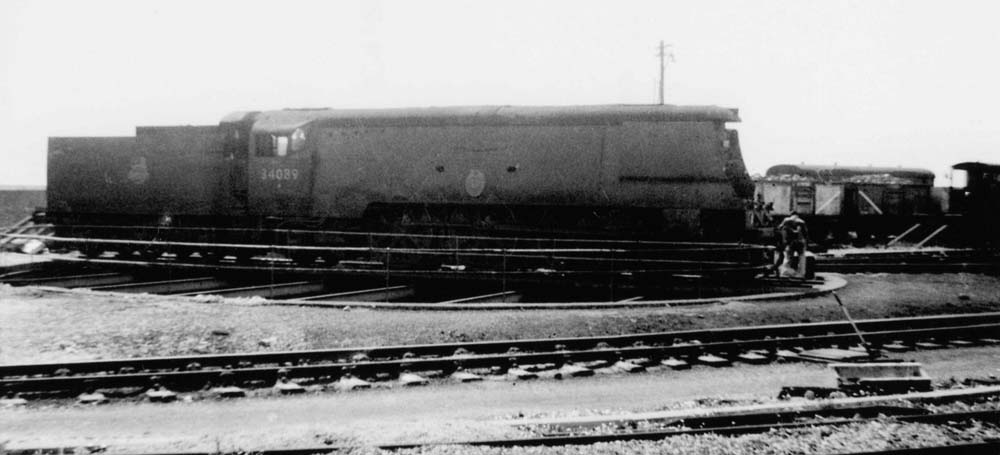
34089 602 Squadron before being rebuilt on the turntable at Dover shed in July 1960.
Then there were the family picnics by Austin Seven or Morris Ten, always accompanied by my fathers pride and joy, the primus stove, in a biscuit tin to protect it from the wind. This device was developed in the desert; my father served with Monty in the Eighth Army and took part in the battle at El Alamein, one of the turning points of the Second World War. This brewing contraption produced passable cups of tea to go with our sandwiches and cake. Most frequently these outings were to the piece of land next to Blackbrook Bridge at Bickley Junction where my father would cadge water from the signalman on the box up on the Chislehurst line, or to the hills above the SE Main line at Polhill where the day usually ended by seeing the up Golden Arrow Pullman.
And so the early days of this young railway enthusiast progressed and developed with the purchase of my first Ian Allan combined volume in 1958 with the realisation that steam existed outside our little world of Dover and Bromley. Visits to London by train from Bromley North and South had already started before it dawned on me that steam had a limited life. Sunday 14 June 1959 was a very sad day for the Bromley South gang as this was the last day of steam to the Kent Coast. I still have full record of the proceedings that evening as No 34001 Exeter worked the last down Ramsgate and L1 Class 4-4-0 No 31753 the last down Dover. Only the boat trains and a few others would remain at Bromley South and soon my horizons would broaden into steam in Europe and elsewhere, into wider railway interests including so called modern traction, and things narrow gauge, the latter holding a particular fascination for me. This book attempts to cover at least some of my long obsession with railways.
Don Benn
Southampton
September 2016
Chapter One
Kent Rover 11 September 1960
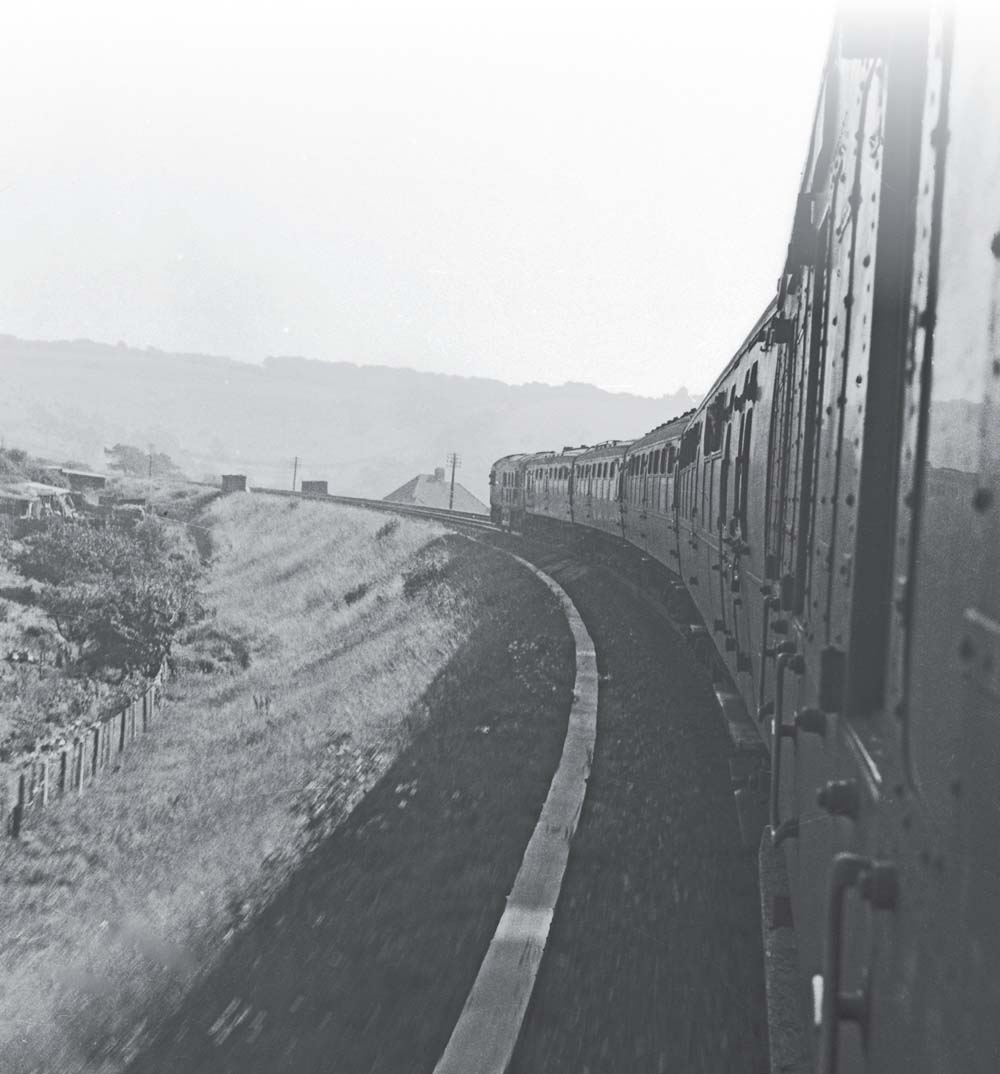
Sulzer class 24 D5000 climbs past Buckland with the 9.10 am Charing Cross to Ramsgate.
We had covered no less than 329 miles by rail and all for the 10 shillings and sixpence cost of a Kent Rover ticket
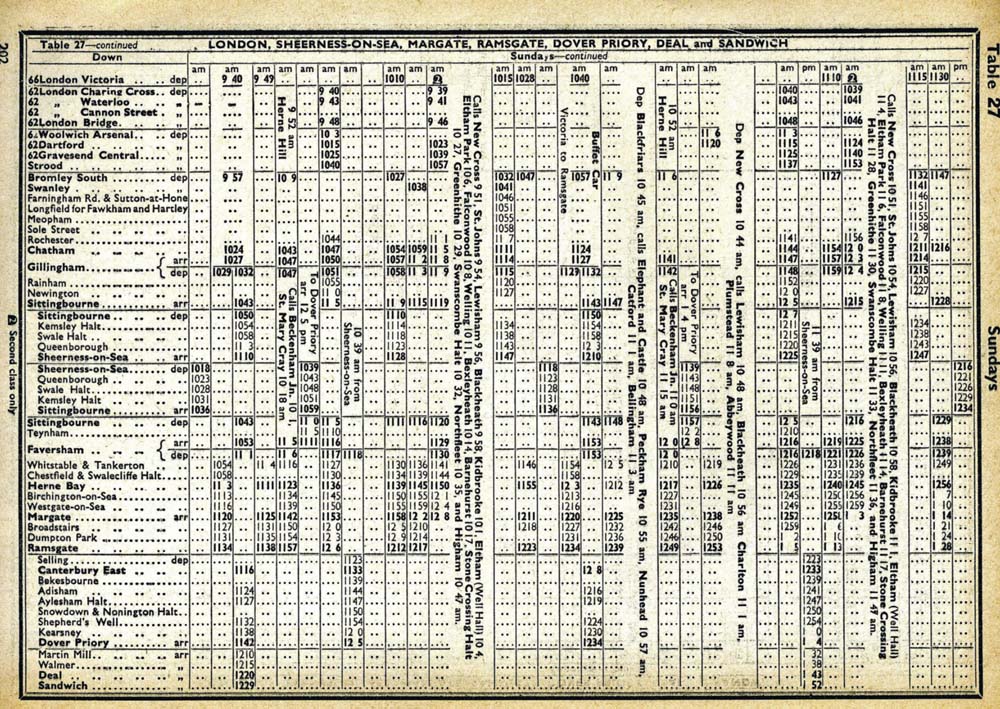
1961 Summer timetable.
C ompletion of Phase 1 of the Kent Coast electrification programme in June 1959 meant the end of steam from Victoria to Ramsgate and Dover via the Medway towns. It was greeted with some dismay by the small band of youthful enthusiasts who used to frequent the footbridge which crossed the country end of Bromley South station, and from which we used to watch the seemingly endless procession of Maunsell 4-4-0s, King Arthurs and Moguls mixed up with BR standard class 5s and of course the Bulleid Pacifics, which worked mainly on boat trains between London and Dover or Folkestone. These were to last another two years, but in the immediate aftermath of June 1959 they didnt have the same appeal as our beloved Ramsgates at three minutes before each hour worked by such gems as Sir Meleaus de Lile or Sir Dinadan . However every cloud has a silver lining and the completion of this phase of electrification saw the introduction of a short lived Kent Rover ticket giving unlimited travel over the newly electrified lines from London and Bromley South to Ramsgate, Dover and Sheerness. The temptation to spend the day bashing up and down the lines in the newly built CEP and BEP stock was irresistible. The pattern of these trips was broadly similar each time: Bromley South to either Ramsgate or Dover, then a diesel or steam hauled train between the two and a return to Bromley South, followed by the same in reverse with a side trip to Sheerness for good measure. The standard hour train service, especially on Sundays, was quite generous, as follows:
Next page
